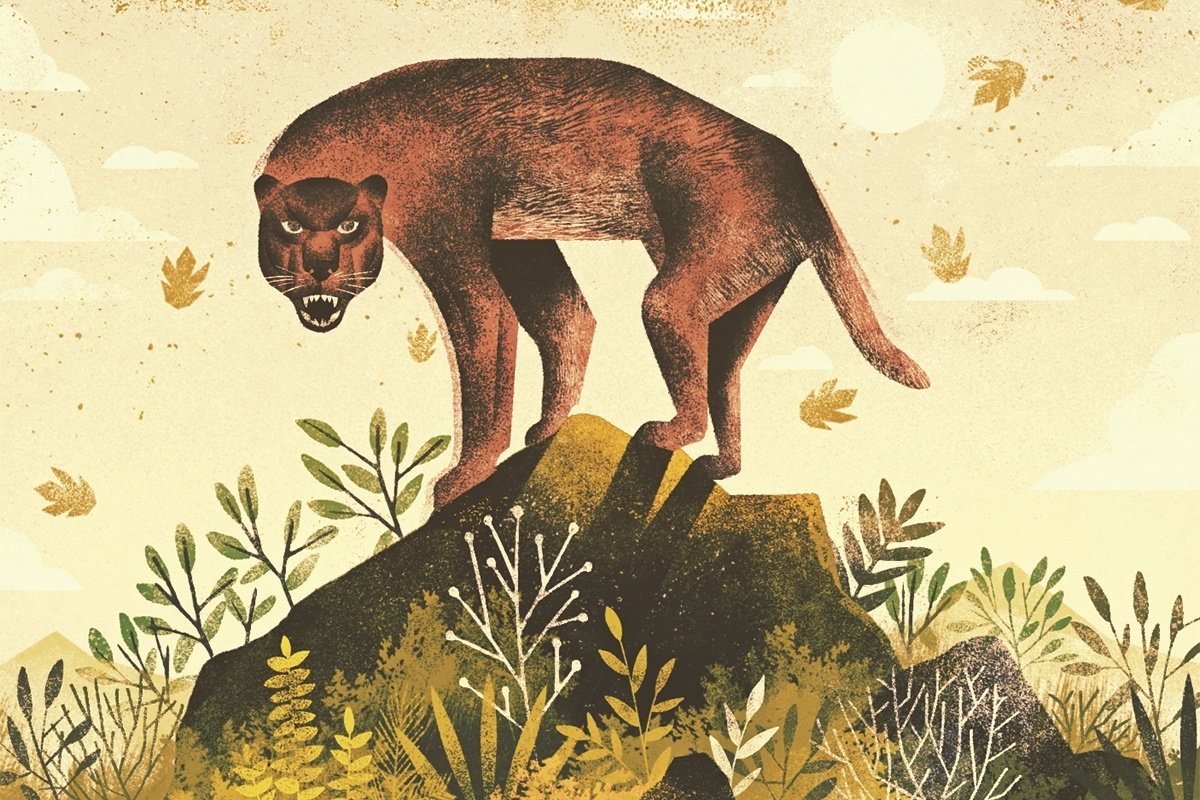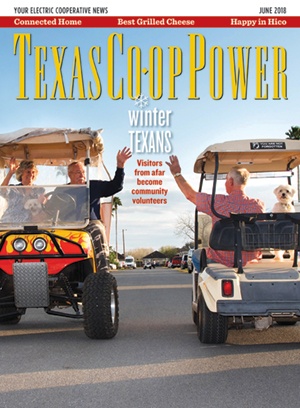Of the prehistoric creatures that once roamed the land now defined as Texas, one that might seem suited for modern times is the bear dog. These ancient mammals, closely related to the common ancestor of bears and dogs, colonized Texas during the Eocene Epoch, 56 million–33.9 million years ago.
“The extinct family Amphicyonidae, commonly called bear dogs, represents a major group of carnivores with a rich evolutionary history of more than 30 million years, extending from the Middle Eocene to the Late Miocene,” write Susumu Tomiya, a vertebrate paleontologist at the Field Museum of Natural History in Chicago, and Jack Tseng, an anatomist at the University at Buffalo. “During the course of their evolution, bear dogs spread to all northern continents as well as Africa and included not only bear-like forms but also small fox-sized animals and wolf-like pursuit animals.”
Although Tomiya came across an odd fossil in a dusty drawer in Chicago’s Field Museum, the Chihuahua-sized jaw had been unearthed near El Paso in 1966. Nobody was sure what it was, so Tomiya and Tseng decided to take a closer look.
“The teeth reminded me of some of the later and much larger carnivores known as bear dogs,” Tomiya said. The best-known types of bear dogs were as big as modern-day brown bears, however the Texas variety was diminutive by comparison. To be certain of the identity of the skull, Tomiya and Tseng studied a micro-CT scan of the rock-encrusted fossil, which they used to create 3D reconstructions of the skulls.
“These scans,” Tseng explained, “helped to unlock important anatomical features on the inside of the specimens, and that information allowed us to determine the true identity of these very old fossil skulls as amphicyonids.”
“What’s remarkable about this discovery,” Tomiya added, “is that it gives us a new understanding of where these incredibly successful hunters evolved.”
Earlier research suggested that bear dogs crossed from Eurasia into North America, but the newer study, which also compared the fossils to similar discoveries housed at the University of Texas, suggests that the bear dog could have arisen first in North America. It also pinpoints Southwest Texas as a key location for this in-credibly successful group of predators.
Bear dogs were ferocious hunters with huge jaws and crushing teeth. The enormous bear dogs of the Miocene may have resembled modern bears, but the Texas variety, which date to much earlier, looked more like tiny dogs or foxes. Unlike dogs, however, they had a heavier build and walked with their feet flat on the ground (like bears) instead of off the ground with the foot bone serving as an extension of the legs as is the case with modern dogs.
Tomiya estimates that the Texas bear dogs may have weighed about 5 pounds and had molars that allowed it to feast on small mammals, fruit and insects much as foxes do today.
“Bear dogs and true dogs shared a common ancestor,” Tseng pointed out, “but there is little evidence that true dogs are direct descendants of bear dogs.” At some point, the family Amphicyonidae was gradually displaced by more modern forms of bears and dogs, which were better adapted to compete.
Although bear dogs roamed Texas for more than 30 million years, increasing aridity and changing landscapes made hunting tougher. Early forms of pack-hunting wolves and dogs likely outman-euvered bear dogs.
“Bear dogs happen to be extinct today,” Tomiya reported, “but their history is relevant to understanding where living bears and dogs come from and how their diversity has been shaped over millions of years while they coexisted.”
“In a way, bear dogs were variants of nature’s evolutionary experiments on the predatory lifestyle,” Tseng added, “making them helpful in putting modern predator adaptations into context.”
Editor’s note: September 17, 2018
The second sentence in this story was edited for accuracy.
Martha Deeringer, a member of Heart of Texas EC, lives near McGregor. Her new book, Elephant Dreams, is available online.


